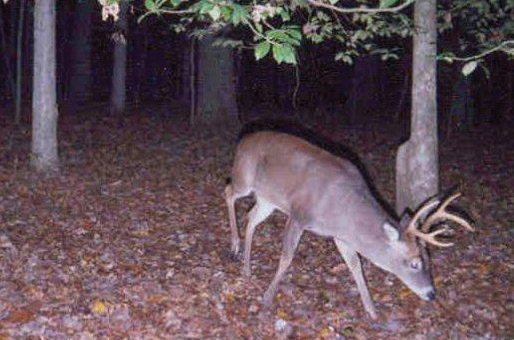
It is often necessary to adjust the game plan at halftime when a football team is engaged in an important game. If the defensive backs are locked in on the receivers every play, consideration is given to a few quick-hitters into the line by the running backs. Conversely, if the defensive linemen are clogging up the middle expecting a run, it’s time to air it out to receivers.
By the same token, as deer season reaches its final weeks, it’s often necessary for hunters to adjust their game plans. Why? Because the bucks are making adjustments and if hunters don’t figure out what’s going on, they’re left wondering what the heck happened.
What happens during the latter days of hunting season after the rut is over? Bucks aren’t chasing does, unless the few does not bred during the first estrous cycle are still available for breeding. Basically, it becomes a rather difficult game to play as the bucks, exhausted and worn down from breeding and fighting other bucks, become rather difficult to pattern. For many hunters, if they don’t get their deer early, they hang it up after the rut and head for the lake where the bunched-up crappie are more predictable.
David Moreland, who retired from the Deer Study Leader position with LDWF several years ago, offers suggestions as to the best way to hunt bucks late in the season.
“In Area 2, northwest Louisiana, December generally marks the end of the rut. However, bucks may be looking for a few does that have not bred, but generally by mid-January, it’s over,” Moreland said.
This time of year in this part of the state, a game plan change is necessary to improve your chances at a good buck, according to Moreland.
“This is the time of year where hunting between the feeders may pay off as bucks move around looking for does. In late December, the trails through the woods leading to food plots and feeders are generally quite distinct and visible and this should be areas hunters ought to check out, determining where the deer are coming from and then locate a stand to catch the deer as they come to feed late in the evening,” Moreland added.
Another tactic that can work on tagging a late season buck, according to Moreland is to move the feeder.
“I like to change a feeder location or hang a bucket feeder in an area where you have seen deer but not hunted. Keep in mind that prevailing winds this time of year are generally from the north-northwest so your stand location should be in the south-southeast corner of the area. Again, hunters should stay on their stands until last light,” he added.
Moreland also suggested that hunters might want to freshen up their food plots toward season’s end.
“With bucks going back to the feeding mode after the rut, you might want to consider adding some nitrate to the grass patches and keep them attractive. Also if the weather is good; clear and cold with high pressure, plan to stay on the stand longer than normal.”
What about native brows plants? Hunters should plan to utilize what Mother Nature has already put there.
“Since many of the woody shrubs and trees lose their leaves, the focus will be on those that still have them. Blackberry, privet and honeysuckle would be three to look for since these will tolerate the cold temperatures and put out new growth on warm days. I have especially seen heavy use of honeysuckle in northwest Louisiana during late winter,” said Moreland.
Want to be on the winning team when it comes to getting a late season deer in your sight picture? Be adaptable. Change your game plan to correspond to what the deer are doing.
 fgazette.com Community news site for Union Parish Louisiana
fgazette.com Community news site for Union Parish Louisiana